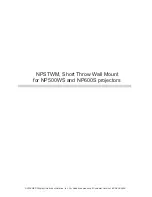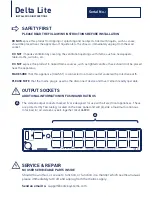
Microphone · Phonograph
Before you use either the microphone
or phonograph input on the projector,
move the sound-input switch to
MICRO-PHONO (Figure 8).
Microphone-Screw
the microphone
connector onto the
MICROPHONE RE
CEPTACLE.
Make sure the fitting is
tight. The microphone volume is reg
ulated by the volume control. (Adjust
the tone balance control to the desired
position.)
Phonograph-Connect
your record
player by inserting its output phono
plug into the
PHONO RECEPTACLE.
The
plug must be plugged all the way in.
The phonograph volume is dependent
upon the adjustment of the volume
control on the projector. Maximum
frequency response of the amplifier
will be obtained when the tone bal
ance control is turned counterclock
wise as far as it will go.
Note:
The microphone and phonograph
input circuits of the projector are high·
impedance type that match crystal and
other high-impedance units.
FIGURE 8
SOUND-INPUT
SWITCH
Sound Optics
Focusing the b·�am of light from the
exciter lamp is extremely important;
it is accomplished by moving the fidel
ity lever up and down until maximum
clarity is obtained. The sound track,
running along one edge of the film,
can be on either surface of the film,
depending upon what type of film is
being used.
Figure 9 illustrates the proper po
sition of the beam for each of the two
types of film: one threaded with the
emulsion side on top and away from
the sound optics (A), and the other
with the emulsion side on the bottom
and toward the sound optics (B).
FIGURE 9
11







































